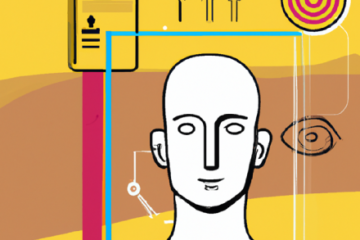Are QR codes the next big thing in Customer Experience management?
Are QR Codes the next big thing in Customer Experience Management?

QR code technology has been around for years. What started as a warehouse tracking methodology has now been widely adopted by brands in aiding their marketing efforts. Despite having been around for years, QR codes never came to the forefront as the go-to marketing strategy that businesses and marketers could adopt.
This, however, has changed over the past couple of years with smartphone manufacturers embracing the technology and building native capabilities to facilitate the adoption of QR codes. (We’ll get to the methods of scanning in a bit.) In 2020, marketers, business owners and founders are incorporating QR codes into their marketing strategy and building entire product lines around it.
Will the current pandemic kill the use of QR Codes?

Oh Hell No!
If you asked me this question 5 years back, my answer would have been “Probably”, but with the digital revolution, QR codes have seen a boom in adoption. In fact, from a multi-acre establishment to a small pan-wala around the corner today have nothing less than 4 to 5 QR Codes displayed in an attempt to simplify payment methods.
Smartphone manufacturers today have baked QR Code scanners in their native camera apps. While this being restrictive to newer models and versions of smartphones, PayTM has come to the aid to enable QR Adoption. So technically, you do not need to download a separate app to scan barcodes. Yet, there may be a small bunch of consumers who may not be technologically savvy and do not use the latest devices or do not prefer PayTM as a digital payment channel, you can always download QR Code scanners from the Play Store that are barely Kbs in size.
But there is one major hindrance to QR Codes: How can you compel your customers to pull out their phones from their pocket and scan a code? SMS and Email reduce the customers’ efforts by directly showcasing a link that customers can click to provide feedback, can QR codes replace these traditional mediums? Stick around and we’ll give you the answer to this question in a bit.
The place of QR codes in customer experience management
With the current situation and increased focus on health and safety measures, manual modes of customer feedback capture have seen a decline in user adoption. With various social distancing norms at play and people’s apprehension with close-contact, manual methods of feedback capture are potentially dead. I may not be wrong either in stating that unless proper sanitisation methods are put in place, Kiosks are potentially dead too. But what has that got to do with QR Codes?
Conventional methods of feedback capture i.e. SMS and Email ask feedback from customers only on the touchpoints you want to capture and at the time you want to capture. Customers cannot proactively provide feedback today at their own will. Even if they can, it gets extremely difficult to find the right method of providing feedback on a specific aspect of your business.
As a consumer today, if I wish to let a brand know that their delivery experience is bad, I either need to wait until I shop with them again, or hunt for the last feedback request and hope the URL is still functional or go to their website, find a way to write some constructive feedback and hope it reaches the right teams. QR codes, on the other hand, eliminate this inconvenience by simply placing dedicated QR Codes at each touchpoint.
The package in which the product was delivered has a dedicated QR Code to provide feedback specifically for the delivery experience. This, in turn, is directly managed by the logistics team. As a consumer, I know my feedback is hitting the right desk. Most of all, the channel is always on! Consumers are not restrained by time limits and can talk to brands whenever they like.
With widespread forced adoption of digital transformation, brands will now move towards channels like SMS and Email, thereby saturating these mediums. And creative differentiation will now come at play. An alternate and effective method of capturing customer feedback is QR Codes. This is not only a method of capturing feedback but also an opportunity for companies to brand their CX initiatives.
Here are some of the benefits of adopting a QR code technology:

- QR Codes are highly cost-effective. The cost of printing QR Codes on products, posters, bills and tent-cards is far lesser than capturing feedback through SMS and Email channels.
- You can give buyers special offers and discounts and track their online behaviour through QR Codes, thereby increasing conversion rates.
- Tracking and analytics are one of the key benefits of having a QR system installed. You can know precisely “how many” customers scanned, from “where” and “how” all through UTM attached URLs sitting behind these QR Codes. You can understand the effectiveness of marketing campaigns and design communication strategies to boost the adoption of QR Codes. QR codes are highly effective in tracking and leave very less to speculations.
- Not all brands are doing it. While QR Codes have seen a jump in the last couple of years, the number of brands leveraging it is far lesser. Capitalisation on the idea of QR Codes and integrating QR Codes not just for feedback but also for various marketing engagement activities can lead to distinctive brand positioning, in turn leading to higher market share.
QR codes are the bridge between human intervention and digital transformation. The term “Phygital” falls well in place to describe a QR Code enabled CX initiative. QR Codes can be available at every touchpoint. Right from product packaging to store walls to personalised tent-cards in hotel rooms, QR codes can be omnipresent. Let’s take a look at some of the use cases of QR Codes:

Steps to creating a QR Based feedback channel:

Enabling QR based CX initiative is not all that difficult. It’s a simple 3 step process:
Step 1:
Identify the touchpoints you wish to engage with your customers on. Keep a mix of both static and dynamic QR-based feedbacks. For example, static includes posters, billboards, standees etc., while dynamic include bills, product packaging, loyalty cards and so on.
Step 2:
Connect with LitmusWorld to get both creative and project assistance. We do the heavy lifting for you. We not only help you with touchpoint identification, but we also help you in setting up questionnaires, branding your CX initiatives and ensure the success of your CX initiatives.
Step 3:
Analyse and optimise your campaigns with the help of our team of experts to get improved results on your feedback initiatives.
Getting creative with QR codes – Do’s and don’ts
While QR codes are fairly versatile when it comes to implementation, there are chances you could go overboard. Here’s a checklist of some of the things that you need to be vary of while implementing QR codes as a channel of collecting feedback:
- While QR Codes can incorporate colour, play around using your brand’s colour palette but ensure your QR Codes are scannable. A QR Code by concept requires the code to be on a darker shade in the foreground with a lighter single shade background.
- The size of the QR Code should be dependent on the placement. The QR Codes should be big enough to be scanned even from a phone with a 2mp camera. Make sure the print is not smudgy or pixelated or offset.
- Since QR Codes have multiple functionalities, clearly state what scanning a QR Code will do. For example, “Did we serve you well? Scan this QR Code and let us know about your experience”
- Have a non-shortened URL behind the QR code to let your customers know exactly where they will be redirected. This imbibes a sense of confidence that the customer is in a secure environment.
- Make it user-friendly. Clearly state ways in which the customer can scan the QR Code. Also, let them know what will they benefit from scanning the QR Code. You may ask them for feedback but assure them that there is a discount coupon at the end of it.
- Optimise landing pages. Make sure landing pages are responsive to screen sizes, browsers and operating systems. Embed tags and cookies to ensure tracking of consumers for retargeting.
Ways to scan QR Codes:

1. Using Smartphone OEM Capabilities
Smartphone manufacturers today have inbuilt capabilities to scan QR Codes.
Android:
Version 8.0 and above. There may still be devices not able to scan these codes despite running Android Oreo and above. Check compatibility with google lens to make sure your device is capable of scanning QR Codes through the native camera app. Alternatively, you can head over to settings à apps à Camera à turn on “Read QR Codes” to turn the feature on manually (if available).
iOS:
Version 11 and above. Simply open the camera app and point it towards the QR Code. Once scanned, you will see a pop-up that mentions the text/URL embedded in the QR. Click on the pop-up to be redirected to the landing page.
2. Using third-party apps
There are a host of third-party apps in the App/Play store to enable QR Code functionality. These range in sizes from Kbs to Mbs. However, do due diligence before recommending an app to your customers. Ensure there are no unwanted permissions required and the app is clean of phishing and other data security risks. Find apps that are either already widely adopted (ex: PayTM) or apps that consumers would find easier to download and use.
3. Integrating QR Scanners within your app
One of the ways to increase app downloads is by integrating QR Code readers within your app environment. This not only builds trust among consumers but also helps in better tracking and analytics.
How to increase user adoption of QR Codes:
Think from a consumer’s perspective. Is there a driver for the consumer to pull out his/her phone, open the app and scan the QR Code to provide feedback? This drive comes in the form of incentives. The biggest drive for any consumer is honest close-looping from brands. If as a consumer, I know that brands respond to me faster if I use QR Codes, the adoption of the channel would be higher. You are not only killing feedback cynicism here but also building trust within your stakeholders that your organization is serious about the initiative.
Surprise your respondents with ‘something extra’. Attach a coupon at the end of the feedback survey. Thank them with an immediate or in-future discount.





